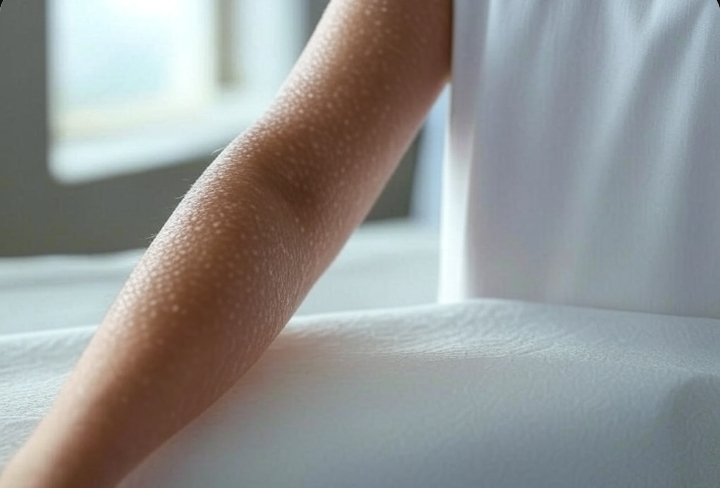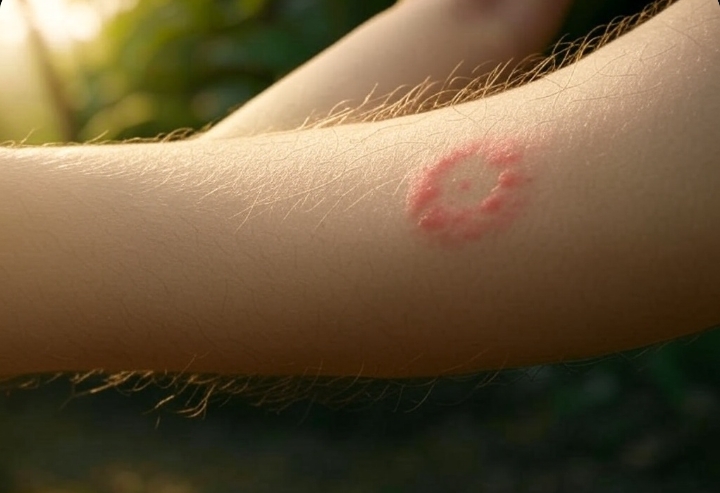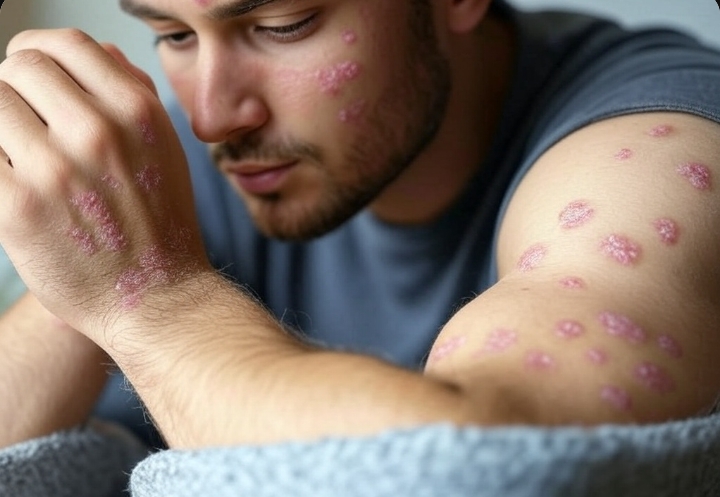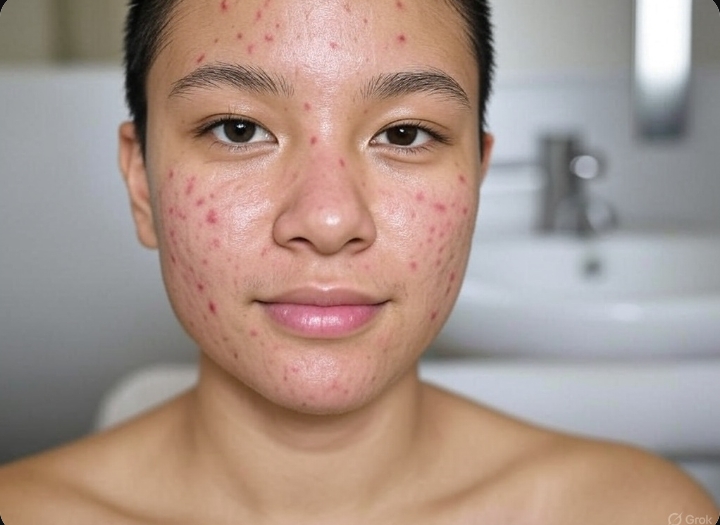
Have you ever noticed bumpy, rough texture on your skin, but you’re unsure what it is? We’ll be having five of the most common body skin disorders.
In this guide, we will break down five common body skin disorders that you might be suffering from, what causes it, and how to treat it. We will also share with you tips on how to prevent them from coming back in the future.
5 Body Skin Disorders
Chicken skin
If you ever feel that your skin feels like sandpaper, especially on the upper arms or on the lower legs, you might be suffering from something called chicken skin.
Medically, Chicken skin is known as keratosis pilaris. This condition is due to an over buildup of keratin. Keratin is actually a normal protein in your skin, and you actually need keratin.

Keratin has a high concentration on places like your nails and your hair. And that’s what gives it that nice rigid structure. Keratin is also on your epidermal layer so that you do not always injure yourself, and it builds up the skin barrier.
However, in keratosis pilaris, there’s an overgrowth of keratin in your hair follicles. So what are the causes of keratosis pilaris? This is actually due to genetic predisposition. So if a parent suffers from KP, you potentially might have KP too.
The downside of keratosis pilaris is there’s no permanent cure. So how do you tell keratosis pilaris apart with other skin disorders?
- It feels rough and bumpy all over your skin.
- There’ll be mild redness of your skin, and it comes in small tiny bumps.
However, when you scratch them, they do not bleed. So how do you treat chicken skin?
- You need to exfoliate regularly. Using a cream or lotion with lactic acid, glycolic acid, or salicylic acid is very effective on reducing your chicken skin.
- Moisturize with urea-based products or ceramide-based products.
However, if you do the first two steps and it’s still persistent, you might need retinoids like adapalene or tretinoin to increase the exfoliation of your skin.
Fact about Chicken Skin
Research have shown that those suffering from chicken skin actually have lesser chances of suffering from acne. So in conclusion, although keratosis pilaris is harmless, regular maintenance actually reduces it further and helps control it.
Fish Scale Skin
Fish scale skin is known medically as Ichthyosis vulgaris. It’s a genetic predisposition of your skin whereby the top layer of your skin doesn’t exfoliate quickly enough. So you end up, you have this sort of skin that looks like fish scales, but do not know that this condition actually worsens during the dry or winter season.

Causes of Ichthyosis Vulgaris
The condition is due to genetic predisposition. That means that you can only control it, but you won’t be able to get rid of it. So how do you tell it apart from other skin conditions? Typically, it’s on the lower limbs and on the upper limbs as well. They’re thick, dry, and scaly, resembling something like fish scales.
Fish Scale Skin Treatment
Fish scale skin treatment is rather straightforward. All you need to do is exfoliate and moisturize, just like keratosis pilaris, using exfoliators like lactic acid, glycolic acid, and salicylic acid creams or lotions, and regularly moisturizing your skin with urea-based products and ceramides-based products.
I it doesn’t go away, you can always top it up with retinoids. So in conclusion, regular moisturizing is key to controlling your fish scale skin.
Ringworm
Despite its common-sounding name, ringworm, is actually not caused by any worms at all. Ringworm, or otherwise known as tinea corporis, is actually a fungal infection of your skin. Now, this particular skin condition is highly contagious. That means it spreads from person to person.

Cause of Ringworm Infections
It is actually caused by a fungus called dermatophyte. They are small, teeny, tiny mushrooms growing on your skin. So it’s actually made worse by sweat and tight clothes as well.
So how do you tell it apart from other skin conditions? It is typically circulate in nature with red borders and a clear center, resembling a crater or a worm.
Ringworm Treatment
You can use antifungal creams like Clotrimazole or Catechornazole creams.
And if that doesn’t work, you can use oral antifungal. But end of the day, prevention is better than cure. So make sure always shower or change your clothes after you sweat excessively.
The moment a ringworm starts to appear, seek for treatment immediately.
Psoriasis
Psoriasis is a chronic autoimmune disorder that affects any part of your skin. And psoriasis comes in many, many forms.

Causes Of Psoriasis
It’s an immune system dysfunction that triggers excessive skin production by your skin. That means your skin produces the epidermal layer uncontrollably, and that buildup leads to something known as psoriasis.
It could also be triggered by environment and lifestyle along with stress.
So how do you tell it apart from other skin conditions? It’s typically red in nature with white scales resembling snake skin. And if you scratch it, it bleeds.
Psoriasis Treatment
Typically, it’s steroid creams along with either vitamin D or calcium creams.
If that doesn’t work, and now with modern medical breakthrough, there are injectables known as biologics to reduce your psoriasis. And if you have a very severe psoriasis, you can actually undergo something known as phototherapy using UV radiation.
Facts about Psoriasis
It is commonly misdiagnosed with other skin conditions like eczema. In this particular research shown by the Journal of American Cardiology College, it shows that people with psoriasis have high risk of cardiovascular issues. So in conclusion, although psoriasis is a chronic skin condition, proper management can significantly improve your quality of life.
Body Acne
While body acne occurs is a three-step process. First, your pores are clogged. Secondly, there’s excessive sebum production. And third of all, there’s excessive bacterial buildup.

Body acne can actually get worse from tight clothing, friction with your clothes, and as well as excessive sweating. So how do you tell body acne apart from other skin conditions? It can come as small tiny bumps or big red bumps.
And more often than not, if you pop it, there is pus in the middle. And one of the downside of body acne is that it can lead to permanent scarring.
How to Treat Body Acne
- You can use body cleansers that contains salicylic acid or benzoyl peroxide.
- You can use creams that contains clindamycin, which is an antibiotic, or retinoids like adapalene.
- You can use oral supplements like clear it to regulate your skin health and to reduce your acne.
Interesting Facts About Body Acne
Now, in this particular research, it shows that close to 80% of body acne occurs in people suffering from severe acne. So in conclusion, small lifestyle changes and treating your acne as early as possible can prevent permanent scarring on your body.
General Tips on How to Look After Your Skin
There are four things to avoid;
- Avoid tight-fitting clothes
- Avoid excessive sweating
- Bathe constantly
- Avoid excessive exfoliation.
Five things to do;
- Maintain proper hygiene
- Drink plenty of water
- Moisturize every day, especially when you have dry skin
- Use sunscreen to minimize UV damage
- Manage your stress because stress can trigger a lot of skin disorders.
Conclusion
Small lifestyle changes and treating your skin problems as early as possible can prevent permanent scarring on your body. Although skin issues can be depressing and hard to get rid of, but proper management can significantly improve your quality of life.
Be the first to comment